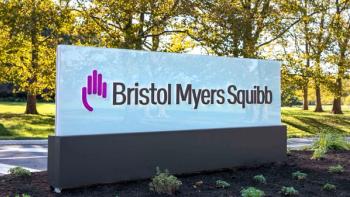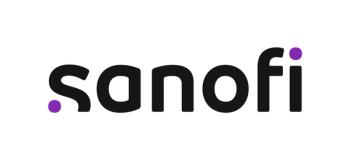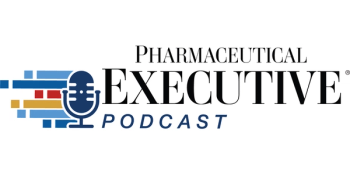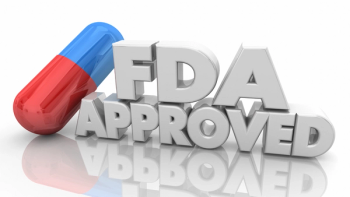
- Pharmaceutical Executive-09-01-2003
PE's annual Media Spend Trends
The economy may still be suffering from the twin shocks of September 11th and a bursting technology bubble, but pharma spending on promotions continues to grow at a double-digit pace.
The economy may still be suffering from the twin shocks of September 11th and a bursting technology bubble, but pharma spending on promotions continues to grow at a double-digit pace.
Total spending-including direct-to-consumer advertising (DTC), professional advertising, detailing, and sampling-grew by 11 percent from 2001 to 2002, from $19.4 billion to $21.5 billion. For the first five months of 2003, the pace of growth in DTC expenditures is a bit slower than the 15 percent average annual growth the industry saw from 1996 through 2002, and considerably less than the astonishing 23.6 percent increase in spending that was recorded from 2000 to 2001. But promotional spending continues to represent about the same percentage of pharma sales: 11 percent in both 2001 and 2001, but down from 15.7 percent in 2000 and 13.2 percent in 1999.
The figures come from an analysis of pharma promotional spending conducted by the research and consulting firm IMS Health and compare the year-end results of 2002 with 2001. IMS collects data from various healthcare sources, such as drug manufacturers, retail outlets, and hospitals, and receives additional information from TNS Media Intelligence/CMR. Tracking firms Verispan and PERQ/HCI also provided data for January through May and June, 2003.
Key insights from the analysis include:
- Spending on prescription medicine DTC advertising dropped two percent in 2002-the first year it has decreased. But expenditures are up so far in 2003.
- Spending on blockbuster products remained strong.
- Journal advertising grew a scant three percent in 2002-a welcome relief for publishers because spending in the sector dropped 11 percent in 2001.
- Overall spending and sampling grew 13 percent each in 2002.
The numbers raise some important questions for pharma: Has DTC finally hit a plateau? Will professional advertising budgets return as pharma companies gain a more sophisticated sense of the return on investment of various media? And how high is the industry willing to go in its detailing arms race?
"Pharma marketers have become more savvy," says David Blumberg, managing partner for North American health and life sciences at the consulting company Accenture. "They realize which products have more of a consumer focus and which don't, and they react accordingly."
DTC
Spending on DTC advertising for brand-name products dropped two percent in 2002 to $2.64 billion, down from $2.68, according to IMS Health. The fall marks the first ever decrease.
Linda Cicarelli of the healthcare marketing agency Sudler & Hennessey and a member of the Association of Healthcare Media Directors, says, "Reports started coming out that the return on investment (ROI) wasn't there, and companies pulled back some of their spending because of it."
Robert Coen, director of forecasting at the media planning firm Universal McCann, put it more succinctly: "If there's a chance their competitors won't advertise for some reason, they won't either."
GlaxoSmithKline outspent its competitors in 2002 with $504.5 million in DTC advertising, a five percent increase from the previous year, because of increases in ads for such products as its diabetes medicine Avandia (rosiglitazone). Pfizer's DTC outlays reached $333.3 million, up four percent in 2002 in support of its statin medicine Lipitor (atorvastatin) and arthritis treatment Bextra (valdecoxib), among others. Merck came in third at $319.2 million, a two percent increase for the year, as it continued to advertise the statin Zocor (simvastatin), followed by Johnson & Johnson at $226.6 million, a 27 percent increase to support ads for its arthritis treatment Remicade (infliximab) and antifungal remedy Nizoral (ketoconazole). And AstraZeneca was the fifth highest spender at $205.1 million, up 43 percent, to increase advertising for its gastrointestinal treatment Nexium (esomeprazole) and migraine medicine Zomig (zolmitriptan). For the year ending March 31, 2003, Lipitor generated $6.3 billion in sales, followed by Zocor with $4.2 billion in sales, IMS says. Rounding out the top ten companies were
- Aventis, $169.7 million, up 21 percent
- Schering-Plough, $144 million, up 12 percent
- Pharmacia, $131.7 million, down 33 percent
- Bristol-Myers Squibb, $117.4 million, down 31 percent
- TAP, $82.4 million, up 123 percent.
The wide variations in promotional expenditures among the last three of the top ten spenders were because of several external factors. Pharmacia's DTC spend declined as a result of its pending merger with Pfizer; BMS decreased spending partly because it was mired in financial and legal trouble; and TAP, after paying fines and shedding its legal woes, increased its spend to support the acid reflex treatment Prevacid (lansoprazole). Prevacid was the third highest selling product for the year ending March 31, 2003, with $3.7 billion in revenues.
The top 20 companies represented 61 percent of all DTC spending in 2001 and 69 percent in 2002, according to IMS. "The heavy DTC spenders will continue to do so," says David Gascoigne, IMS' consulting practice leader for promotional effectiveness, adding that companies have become wiser about the use of DTC. "What we've seen is that DTC advertising is no longer just a launch phenomenon."
Within DTC budgets, online promotions picked up steam in the past year as companies began realizing the benefits of providing electronic coupons on their own websites, larger ads on other sites, and other e-promotions.
For the first six months of this year, pharma companies spent $116.2 million on e-promotions, according to Verispan, which began tracking pharma's online expenditures in 2003. Matt McNally, media director for the online promotion consulting company Insight Interactive, says pharma companies are just beginning to use TV ads to drive consumers to websites. He says large pharma companies have begun launching two or three online campaigns per year for their blockbusters.
Nevertheless, Stephen Smith, president and CEO of online pharma marketing software company Optas, says that pharma companies are "about a decade behind financial services firms when it comes to sophisticated internet marketing." So although online spending continues to grow, the "luster is off" the internet as the hot new thing, and marketers are looking squarely at ROI before committing to large web expenditures.
"Companies still need to better coordinate their e-marketing strategies with traditional campaigns," Smith says. "The mantra, 'Do more with less' came through loud and strong in the past year."
So far in 2003, Verispan says DTC spend is up, with companies dedicating more than $1.4 billion to consumer promotions for the first five months of the year, an increase of 13.8 percent.
"There will be increases in DTC spending overall in 2003 and 2004," says Gascoigne. "But it won't be at the same magnitude as the late 1990s." He also predicts that, besides spending on statin ads, Bayer/GSK, Lilly/Icos, and Pfizer will push the erectile dysfunction category into the top five in 2004, because Bayer/GSK's launch of Levitra (vardenafil), Lilly/Icos will introduce Cialis (tadalafil), and Pfizer will boost advertising to protect its market-leading Viagra (sildenafil).
Blumberg says companies also will spend heavily on ads for allergy, pain relief, and anti-anxiety treatments because competition remains strong in those categories. "Those types of products translate well to DTC ads because they can talk about symptoms that consumers can relate to," he says. "Patients are acutely aware of what they're feeling, as opposed to hypertension, which is a silent killer. That category is often better served through professional advertising, because doctors are better at delivering the message treatment."
He cautions that the wild cards during the next few years are FDA and pharma pipelines. Government scrutiny of product ads will likely increase, and officials could become more conservative even though FDA is trying to approve products faster. "And," Blumberg adds, "if the top 15 companies enter a period where they release uninteresting products, DTC spending could erode."
Professional Advertising
Though journal advertising grew a scant three percent in 2002 to $481.2 million, up from $466.3 million, reports IMS, the increase was a welcome relief for publishers because professional spending had dropped 11 percent in 2001, down from $523.1 million in 2000. But IMS' data only includes money spent on ads for prescription medicines.
PERQ/HCI, a division of VNU, reported a much higher figure for journal advertising in 2002: $752.5 million, which includes ads for non-prescription products. Yet, PERQ/HCI says its figure grew three percent over 2001, the same as the growth reported by IMS.
Gordon Hughes, president and CEO of American Business Media, says DTC advertising, the chief rival for pharma's dollars, has yet to reach stagnation despite the decrease in spending in 2002. He says the sector grew so much during the past six years that it is premature to think it has reached its potential. "We know DTC campaigns work to raise awareness," says Hughes, "but it doesn't educate consumers about the products they take."
Hughes and consultant Mark Rothman, president of Mark Rothman & Associates, believe that about $300 million companies diverted to DTC from the professional ad ranks during the last few years. But they say recent studies show that journal adverting remains the best way to reach physicians. (See "AMP Still Pushing its ROI Report," PE, April 2003.) The Association of Medical Publishers claims journal ads generate the highest ROI when compared with the other advertising channels, DTC, detailing, and meetings and events.
"We're down a bit but we've basically held our own," says Art Wilschek, executive director of worldwide advertising sales for the New England Journal of Medicine (NEJM). "The last three years have seen an overall downward trend."
Wilschek declined to discuss specific numbers, but according to PERQ/HCI, NEJM ad revenues slipped 4 percent in 2002 to $17.2 million, as ad pages decreased 7 percent to 2,297.5 for the year.
He blames the drop on a lack of new products and the DTC shift, but he believes 2003 and 2004 will be better because of Levitra and Cialis, and he expects AstraZeneca to aggressively market its new cholesterol-lowering treatment Crestor (rosuvastatin).
And, like Hughes, Wilschek also is confident that some DTC dollars will find their way back to journals. "Companies realized they overspent on DTC because the ROI was low. DTC ads work, but not for what companies were spending on them."
For the first six months of this year, journal advertising is up 13.1 percent to $205.6 million compared with the same period the previous year, according to Verispan. PERQ/HCI says the hotter therapeutic categories for journal advertising include diabetes/endocrinology, gastroenterology, oncology, and osteopathy.
Hughes echoed Blumberg's warning about the possibility of federal officials negatively influencing spending. "FDA and FCC [Federal Communications Commission]are looking at pharma ad expenditures and whether they are driving up drug costs," Hughes says. "It's a double-edged sword because we in the journal publishing trade want those dollars to come back."
Physician Promotion
Both detailing and sampling grew 13 percent each in 2002, IMS says. The budget for sampling reached $11.96 billion, up from $10.55 billion in 2001, and detailing hit $6.39 billion in 2002, up from $5.66 billion the previous year.
"The key driver of brand performance is still professional promotion," Gascoigne says. "But the question remains, 'How does a company increase face time with physicians?' Detailing and sampling are both up 13 percent each, but they've reached a saturation point."
IMS breaks the data down by office- and hospital-based doctors. Office detail volume far exceeds hospital visits, but hospital calls grew by a larger percentage. Pharma companies spent $5.48 billion on office-based detail visits, up 11 percent, and spent $908 million on hospital calls, up 24 percent from 2002. The number of prescriptions grew 4 percent to 3.34 billion in 2002.
Industry insiders agree that detailing and sampling remain two of the best ways to reach doctors to increase prescription sales, but the numbers associated with fielding significant sales reps are beginning to work against pharma companies.
Ron Brand, IMS' consulting practice leader for sales force effectiveness, says the driving force behind detail and sample numbers is the proliferation of pharma field reps, which are fast approaching 90,000. He considers that a saturation point and predicts the number will "flatten out" over the next two years.
"The issue will come down to which pharma company will be the first to make cuts to their sales force," he says, "because no one wants to lose their share of voice in front of doctors."
Brand estimates that, not including sampling costs, the average cost of a detail call-which only lasts about two minutes-climbed to $160 in the past year. And on average, reps cost a company about $175,000 annually, which includes base salary, incentives, training, benefits, and other expenses.
But Brand questions whether companies are gaining a competitive edge for their money. He says doctors complain that reps are more like salespeople than providers of balanced clinical and product information, and that they are "generally younger and not as well trained" in various aspects of their products as in the past. "Just throwing reps at a doctor is not the way to go. The value of a call will be based on conveying the right messages to the right doctor."
Cicarelli agrees. "They might still be among the best ways of reaching physicians, but a lot of money is being wasted on detailing and sampling."
She sees sales meetings and, to some extent, continuing medical education and other events as growing opportunities to reach doctors. For the first six months of the year, pharma companies spent $1.2 billion on meetings and events, up 5.2 percent for the same period the previous year, according to Verispan.
"Doctors want good information, which meetings can provide as opposed to some detail calls," Cicarelli says.
As the industry enters 2004, questions about pipelines, FDA, sales forces, and other issues remain, but the need for marketers to create mixed yet balanced media campaigns is apparent. "ROI has become increasingly important in recent years, and will grow more vital in the future," Gascoigne says. "Building total brand awareness across several mediums will be critical."
Articles in this issue
over 22 years ago
The Outsiderover 22 years ago
Table of Contentsover 22 years ago
A New Deal with Managed Careover 22 years ago
Matters of (Re)Importover 22 years ago
Show Us the ValueNewsletter
Lead with insight with the Pharmaceutical Executive newsletter, featuring strategic analysis, leadership trends, and market intelligence for biopharma decision-makers.




